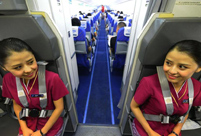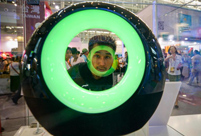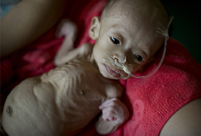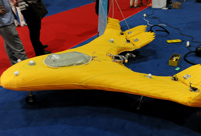 Maritime Silk Road Luxuries of the Han Dynasty
Maritime Silk Road Luxuries of the Han Dynasty
 Ceremony in honor of Confucius held in Sichuan
Ceremony in honor of Confucius held in Sichuan
 Hollywood blockbusters heats up fashion show in NW China
Hollywood blockbusters heats up fashion show in NW China
 Ciao! Chinese beauties!
Ciao! Chinese beauties!
 Naughty polar bear waves to photographer in Wapusk, Canada
Naughty polar bear waves to photographer in Wapusk, Canada
 An eye feast: BFA freshmen registration
An eye feast: BFA freshmen registration
 Top 10 most lavish weddings
Top 10 most lavish weddings
 Most amazing chi-pao beauties
Most amazing chi-pao beauties
 Observe the earth from space
Observe the earth from space
 Chinese lingerie brand arrives in Las Vegas
Chinese lingerie brand arrives in Las Vegas
When General Claire Lee Chennault stepped onto Chinese soil, China was faced with the horrors of invasion by the Japanese as well as internal conflict.
Nell Calloway, the granddaughter of Chennault, clearly recalls the tough period that her grandfather spent in China.
Before Chennault's arrival, he was already aware that the Japanese had invaded China as far back as 1931. But when Chennault arrived in China from America in May 1937, he was able to see for himself the aggressive expansionism of the Japanese and to hear with his own ears stories of the acts of violence and cruelty visited upon the Chinese people.
After conducting preliminary research, Chennault concluded that the China Air Force was poorly equipped, and did not have the necessary training for its pilots. Japanese air strikes had destroyed cities and killed thousands of Chinese citizens, particularly in Shanghai and Nanking.
Calloway recalls that by 1940 the Chinese supply routes from the international community were about to break down under the relentless attacks of the Japanese. Along with Soong Tse-ven, a prominent businessman and politician, her grandfather spared no effort to win U.S. support.
Chennault and Soong came to the U.S. and successfully convinced President Roosevelt of the need to fight against the Japanese occupation.
With a letter of authorization from President Roosevelt, Chennault was able to visit U.S. military bases and recruit about 100 pilots from the Navy, Air Corps and Marine Corp along with a support crew of 200.
Calloway's grandfather also succeeded in shipping 100 P-40 fighter planes to China. Members of the American Volunteer Group, officially named the "Flying Tigers", arrived in China in August 1941 in disguises such as farmers and acrobats.
At that time, the Japanese navy had air superiority over the Americans with its A6M Zero. Because Chennault was so familiar with fighter planes and pilots, he adopted a "hit-and-run" attack straegy which resulted in extraordinary successes in combat.
According to Calloway, her grandfather had practiced this type of aerobatics during the early 1930s.
Calloway recalls the words of a member of the Flying Tigers: "We couldn’t tangle in a dogfight with a Zero, but we did have the advantages that Chennault taught us to use: dive, shoot and keep going.”
From the moment that he first arrived in China in 1937, Chennault shared weal and woe with his Chinese allies.
It was vital for victory in the sky that Chennault established an early warning network using radios and signals to alert people on the ground when an attack was coming.
Thousands of Chinese people understood the importance of the air force, and were willing to spend hours first building the runways and then patching them after bombing attacks.
In Calloway's opinion, without the help of the Chinese, the Flying Tigers would have been wiped out before they even got started.
"The story of what he was able to accomplish with the help of the Chinese people is amazing, and this is what led to the ultimate victory over the Japanese," she says.
During the war, Chinese villagers sheltered and saved numerous wounded American pilots and brought them back to their bases.
According to Calloway, a ‘blood chit’ was sewn on the back of the pilots’ flight suits. It was a Chinese flag carrying Chinese words, and was regarded as thier "passport to rescue".
Her grandfather was extremely grateful to the local Chinese people who risked their lives for the pilots.
She also recalls that the pilots themselves were deeply impressed by the rescue efforts of the villagers, and that they formed a lasting memory of the friendship and sacrifices of the Chinese people.
"If China and the U.S. had not joined hands in defeating the Japanese we would all be living very different lives today," says Calloway. " This is a story that is very relevant to our world today and it is the reason we must not forget. We fought together as brothers to defeat the enemy and we must realize the importance of standing together side by side to bring peace in our world today."
In order to publicize the great efforts of Sino-U.S. cooperation in the anti-Japanese war, a new exhibition in The Chennault Aviation & Military Museum is under preparation, aiming to educate people about the destruction that was going on in China at the time.
In Calloway's words, China and the U.S. are both superpowers. "If we can learn to cooperate then we have a better chance of changing history and leaving our future generations with a better world," she says.
The article is edited and translated from《一直和中国人民在一起——忆外祖父陈纳德将军的“飞虎队”岁月》, source: People's Daily author: Nell Calloway, Director of The Chennault Aviation & Military Museum
 Top 10 world's highest-paid models 2014
Top 10 world's highest-paid models 2014 "Twin flowers" bloom in the air
"Twin flowers" bloom in the air The 4th China-Eurasia Expo opens in Urumqi
The 4th China-Eurasia Expo opens in Urumqi Tall girls shine at model competition
Tall girls shine at model competition Vanguard dancing heats up 2014 Beijing Carnival
Vanguard dancing heats up 2014 Beijing Carnival Girl who cannot gain weight: She is 1, 2.9 kilograms
Girl who cannot gain weight: She is 1, 2.9 kilograms Experiencing maiden voyage between Sanya and Xisha
Experiencing maiden voyage between Sanya and Xisha Chinese inflatable aircraft meets public for the first time
Chinese inflatable aircraft meets public for the first time People enjoy delicacies in Tianjin undersea tunnel
People enjoy delicacies in Tianjin undersea tunnel Artistic gymnastics performance
Artistic gymnastics performance Moon of Mid-autumn Festival
Moon of Mid-autumn Festival Peace Mission 2014 joint military drill
Peace Mission 2014 joint military drill I want to be on stage at the Spring Festival Gala
I want to be on stage at the Spring Festival Gala Sand painting world
Sand painting world COMAC jumbo jet and its global rivals
COMAC jumbo jet and its global rivalsDay|Week|Month